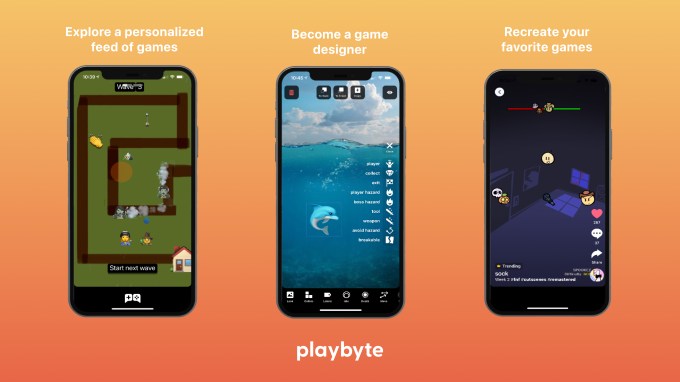- September 5, 2021
- by:
- in: Blog
It was curious enough that OLIO, a UK startup with an app that lets users post a photo of unwanted food and share it with the local neighborhood, picked up $6 million in Series A funding back in 2018. Many outside observers wondered what was going on with this simple app, which looked on first
It was curious enough that OLIO, a UK startup with an app that lets users post a photo of unwanted food and share it with the local neighborhood, picked up $6 million in Series A funding back in 2018. Many outside observers wondered what was going on with this simple app, which looked on first inspection to be little more than a sort of community bulletin board about unwanted food. How could such a low-key idea have attracted such interest from serious investors like Accel? The answer is far more fascinating than its humble origins imply, and today founders Tessa Clarke and Saasha Celestial-One – who started OLIO out of frustration with food waste – prove they really might be onto something pretty big.
For OLIO has now raised a $43million Series B round.
The latest round was led by Swedish investment firm VNV Global (the publicly floated fund which has backed Avito, Delivery Hero, Babylon) and New York-based hedge fund Lugard Road Capital / Luxor (an NYC hedge fund with expertise in marketplaces). Existing investors Accel, Octopus Ventures, Rubio, and Jason Stockwood (technology entrepreneur) and Lord Waheed Alli (media entrepreneur and politician). Additionally, DX Ventures, the VC arm of food delivery firm Delivery Hero, is a new highly strategic investor in the round.
With this new war chest, OLIO plans to accelerate its international expansion plans, growing its Food Waste Heroes Programme, which effectively acts as an enterprise play amongst food businesses and restaurants to achieve zero food waste, reduce their environmental impact and cut carbon emissions.
It will also focus on 10 key markets in Latin America, Northern Europe and Asia, where the startup says it’s seeing strong organic growth.
Founded in 2015 by Clarke and Celestial-One, OLIO started out looking far more like a non-profit than a rocket-ship startup, simply allowing users to give away unwanted food and other household items to neighbors, for free. What perhaps set it apart was the very mission-driven founders, who were and are deeply committed to reducing food waste in the home and helping people to consume more locally and sustainably. But it also turned out to be a god-send to local food businesses like restaurants, who suddenly found they could not only give away food sustainably but also garner positive optics with local customers as a result. This growth-hacking approach has helped OLIO get into some huge businesses Tesco, which last year put 2,700 UK stores on the platform, redistributing surplus food nearing its sell-by date via OLIO’s network.
The brainchild of Clarke, a farmer’s daughter who couldn’t stand seeing food go to waste, OLIO now has over five million users of the app who have shared 25 million portions of food (equivalent to taking 75 million car miles off the road) and three million non-food items, all saved from the garbage dump. Half of all food added to the app is requested within 21 minutes of posting, says the company.
Zoomed-out, the food waste created globally each year amounts to a gargantuan $1.3 trillion. The impact of that is not just lost food but also enormous amounts of CO2.
In a statement (full TechCrunch interview below) Clarke said: “OLIO has grown five times over the last year, reflecting a step change that’s taken place as businesses and citizens look to be more sustainable and connect with their local communities. We’re beyond thrilled to have raised this capital from a brilliant set of investors who are backing our vision of reinventing consumption for more than one billion OLIOers by 2030. We have this enormous ambition because humanity cannot continue to puzzle over how to keep global warming within 1.5 degrees and feed a population of 10 billion – whilst continuing to throw away one-third of the food we produce, and consuming as if we have 1.75 planets. In solving these twin problems we aim to build one of the most transformational companies of our generation.”
OLIO says its Food Waste Heroes programme now has over 30,000 participants . These are “trained members of the community” who collect and redistribute unsold or unserved food from businesses such as Pret A Manger, Compass Catering, Costa Coffee and Elior.
Clarke said demand from both UK and international businesses to reduce their waste is being driven by growing ESG commitments: “Incoming inquiries from major retailers, grocery delivery services and fast-food brands are coming in thick and fast. OLIO is one of the simplest, most cost-effective ways an organization can achieve zero food waste.”
But OLIO is not just tapping the desire of people to see food waste go away, it has also been super-charged by the pandemic because people were suddenly forced to live and interact locally.
That means its ‘MADE’ section for users to buy and sell local homemade food and handmade crafts has seen far greater rates of interest from users. It also has a ‘GOALS’ section, which showcases 100+ simple “swaps”. In other words, OLIO has also unearthed a potential avenue for local borrowing or renting. This put it very much in a place Facebook Marketplace would more or less kill to be. Thus, new features, ‘BORROW’ and ‘WANTED’, are planned to launch within the next six months, say the founders.
The new Series B round will also be used to scale the OLIO team from 40 to 175+.
Per Brillioth, CEO of VNV Global, which led the round, said: “The growth of OLIO over the last year has been nothing short of phenomenal and it’s clear that consumers are becoming increasingly focused on the small actions they can take to improve the sustainability of their households. OLIO, a next-generation community marketplace with the potential for truly global reach, is perfectly positioned to service this movement and in doing so create a truly transformational company.”
Duncan McIntyre, Managing Partner of DX Ventures said: “Having built a solid and fast-growing community of users, OLIO is tackling the global food waste problem in a scalable and sustainable way.”
OLIO clearly has a big vision that goes well beyond food-sharing, as shown in my interview with co-founder Tessa Clarke:
Mike Butcher: Would you say this is the story of a startup which started with a simple idea but which has grown to be something a greta deal bigger?
Tessa Clarke: Yes it’s very much a reflection of where I think the world is today, in that we are waking up to the climate crisis. And in a post-COVID World OLIO suddenly makes an awful lot of sense.We grew over 5X through last year and that sort of pace of growth is continuing as people are realising ‘I want to connect with my neighbours. I hate having to throw stuff away. I kind of want to be connected with my community and feel empowered, feel like I’m making a difference.’
Butcher: Why do you think food businesses have gotten involved in your Food Waste program?
Clarke: They’ve seen the IPCC reports, they know they’ve got to get to net zero. Now, they’ve got to have a proper ESG strategy. That is the food waste heroes program part of the business and it’s booming. We’ve got an incredibly strong pipeline there because businesses have spent the past couple of years kicking off various projects through their supply chain to try and reduce and eliminate food waste. They’ve done all of that, and they’re now coming out the other end of those projects and working with charities and with discounting apps, and they’re reaching the inevitable conclusion that they have to work with OLIO to get to zero food waste. So we spent the last year scaling up very rapidly with Tesco across their store portfolio.
Butcher: What’s the effect of growing regulation and demand from ESG standards having?
Clarke: By analogy child labor was endemic in the fashion industry, for many, many decades. Now in measured and monitored out of existence. The same is now happening with food waste. It’s no longer acceptable to have that big waste container at the back of the store, chucking out perfectly good food. Your customers are calling you out about it on social media, and your employees are telling you that they do not want to be paid to throw away perfectly good food every day. So, if you’re a high street retailer, staff retention is right at the top of your top three challenges.
Butcher: A Series B round doesn’t just happen because people want to throw away a ready meal. Can you tell me more about how OLIO taped into this circular economy and engaged at these big, enterprise levels of companies?
Clarke: Correct. Tesco released a video celebrating our one-year anniversary together. We’ve saved over 5 million meals, and for them as a corporate to be able to reposition themselves as a pioneer, as a leader… that’s going to go through all of their social media channels, all their marketing channels, and it sends really strong signaling to their employees and to their customers that they’re serious about getting to net zero. Other large corporates are sitting up and listening and they want to do the same.
Butcher: A cynical person might say this was a cutesy idea, perhaps on first encountering it. Do you feel that dismissive attitude allowed you to fly under the radar build these grassroots enthusiasts, with a growth approach?
Clarke: You’re absolutely right, we have massively flown under the radar. We’ve been enormously underestimated because of what we looked like on the outside, and perhaps because we were a female founded business. When we started off people didn’t know our long-term vision. We’re rooted in community, and Saasha and I could see very, very clearly, where the world was going, so we’ve built a really strong, authentic mission-led business. We’ve got 50,000 ambassadors who are spreading the word about OLIO all over the world to everybody who will listen, and that number is growing every day. We’ve got 30,000 trained volunteers and we’re getting 1000s more every month to redistribute surplus food in their local community. We hear over and over again: ‘We serve our community and we hate waste’. We’re tapping into something very human, which is the hate of waste. We’re also tapping into something else very human, which is it feels really good to give something you don’t want to someone else living nearby who would like it. It feels good to share. And since COVID we’ve had over 40% of our community that they feel less lonely. That’s pretty major when there are over 9 million people in the UK who say they often feel lonely. That’s really powerful stuff and is not immediately obvious when you open the app. But once people give it a go for the first time they find it’s ‘night and day.’
Butcher: Did you engineer the app’s appeal in that way or did it just emerge organically?
Clarke: We are unashamedly ambitious, and we are driven by our mission. We are piling on towards a three degree, four degree plus warmed planet, the consequences of that are unimaginable and food waste, if it would be a country would be the third-largest source of greenhouse gas emissions. A landmass, larger than China is used every year to grow food that’s never been eaten. One-quarter of humanity’s freshwater is used to grow food that’s never eaten… We’re all getting upskilled on the reality of the climate crisis more and more people are recognizing the number one solution to solving the climate crisis is solving the food waste problem. So Saasha and I are horribly ambitious because we believe that we cannot continue to sit here and scratch our heads as a species and say ‘How are we going to keep the world within one and a half degrees warming?’ How are we going to feed 10 billion people, while still continuing to chuck away a third of all the food we produce? So our master vision of OLIO is we want to completely reinvent how people consume. At the moment people buy things, like washing machines, and then throw them away, That is the model of consumption that humanity has right now. And the model that we are introducing is: ‘I still want to consume but I’m going to see what already exists in my local community, for free, faster than an Amazon delivery, and it feels great to experience it. I will take what my neighbors do not want for free./ We are launching as borrow facility tons as well. And when people want to buy something new, we want them to buy it locally, appreciate the heritage of that backstory, and thus consume more sustainably. We want to disrupt everything that Amazon and Facebook stand for. We kind of want to be the antidote to that.
Butcher: Do you think this put you in the spot occupied by NextDoor (worth $4.3 billion) or Facebook Marketplace?
Clarke: Yes, Facebook marketplace and Etsy. NextDoort optimizes for connecting neighbors to share information, but we are optimized to connect neighbors to share things. That’s one major difference. The other major difference is that sustainability is baked into our DNA, our raison d’etre. This army of 6000 volunteers who, every single day make 1,000s of collection. Thousands of people popping across the road, picking up unsold food from their local canteen or bakery or deli or supermarket, they’re taking that food home. On average, it takes 21 minutes for an item to be requested inside the app. That hyperlocal real-time redistribution network was built into the community.
Butcher: With a funding round of this nature, obviously your investors see a very big opportunity that is not just about people sharing a sandwich that’s about to go off. You obviously have visibility into and data on things that probably no other company has. What do you think would happen if NextDoor launching food sharing or Etsy decided to go for the local market?
Clarke: There is no one who is doing what we’re doing anywhere in the world. There’s a couple of reasons for it. One, it’s really fucking hard, quite frankly, and it’s been a bloody long slog to get to where we are. And I think the other thing is when I think of who my competitors are, I think of the rubbish bin. That is my competitor. And so I have to design a product experience, a community, a brand marketing communications that compete with that so that instead of throwing something away in one second, someone can just use the OLIO app in ten seconds and give something away… We have spent years optimizing for connecting neighbors to exchange things in a way that is simple, safe, fast and fun. Other companies might well try and move more into our space but I believe that what we’re doing is pioneering the total reinvention of consumption, and – eventually, I’d like to think – capitalism… This is a brand new space right now, of course are there are going to be multiple players.
Butcher: This might be a slightly cheeky question, but do you think a man would have come up with this whole idea?
Clarke: No. But if a man had come up with this idea, he would have had a shit tonne more funding than we’ve had to date! I’m being a little facetious, but actually, I fairly emphatically stand by that. Our community fluctuates from month to month between two-thirds and three-quarters female. And the reason for that is because women are still the primary people responsible for food in the home, which is our heartland and where we started. Equally, they are responsible for the decluttering in the home, and the utilization of resources in the home. And this touches on a fundraising point as well, which is that it can be hard sometimes for men to understand the use case that we are talking about because they aren’t the one who is managing that tricky balance of supply and demand of food for your fridge each week. It’s hard work, especially if you’ve got a family. , Plus our female audience particularly enjoys the connection with the community piece. So, of course, a man could have come up with the idea. But I do think that a lot of what OLIO is doing is rooted in a female perspective on the world, which is ‘I hate waste, I care about the environment.’ If you talk to anyone in the environmental movement it massively skews female. Anything to do with community massively skews female. Anything to do with food and purchasing food massively skews female. I’m a farmer’s daughter from North Yorkshire. I had a a pretty poor upbringing, working incredibly hard on my parents’ family farm with my two younger brothers. And when you’re brought up in that really frugal environment on the land, then you grow up with pathological hatred of food waste. So the lightbulb moment was six years ago when I was moving country, had to pack up my house and through the food in the fridge away, and I just said ‘I’m not doing this’ so I stopped packing and bundled up my newborn baby and toddler and set out into the streets, clutching this food, hoping to find someone to give it to, only to fail miserably. That was the moment when, after working in the digital world for the previous 10 years or so, I wondered why there wasn’t an easy app to just post my food so a neighbor could walk around and pick it up. I shared the idea with my co-founder Saasha. Most people thought I was crazy, but she completely got it, and then we just fell down this rabbit hole of researching the problem of food waste, realized a trillion dollars worth of was being thrown away, realizing the environmental impact etc. We realized the reason why people waste throw stuff away is that they’re no longer connected to their community – because you don’t have anyone to give your spare food to.
Butcher: Do you think the effect of the pandemic supercharged the business?
Clarke: Firstly, there were 1,000 of photographs of empty supermarket shelves that reminded that food is their life source. Secondly, people wanted to connect with their local community, either to receive help. For a lot of people staying home to help did not feel like enough, but being able to offer up spare food did. We ran a campaign called “cook for kids”, and we had over 30,000 meals cooked and prepared and offered up to local families, via the app Thirdly, people were living and working from home. It then meant the OLIO exchange was much easier. I wasn’t trying to schedule it in between seven and nine at night, I’m around all day and quite frankly it’s a really nice welcome break, I’ve got someone popping around by the way at two o’clock to pick up something from me, and it’s lovely just to break up the day have a little chat with dogs, be able to get out, walk the dog, get some exercise, do whatever. So people are now kind of living locally. And the final thing is, as we started the dialogue about building back better, and people realized they didn’t need a latte from Starbucks every single day to be happy. So I think that net net, it’s been the best thing that could have happened, and threw into sharp relief that the existential problem facing humanity today is the climate crisis. Everybody woke up and realized we’ve got to do something about it. And on OLIO it takes 10 seconds to give away something that you don’t want, You have a happy smiling neighbor and you’ve saved the planet.
Butcher: I presume a funding round in this nature means you’re going to scale internationally?
Clarke: Because we’ve been available internationally for 6 years we’ve been able to watch the data. We’ve been able to see it grow in, for example, Singapore or Mexico. These are not countries that I would have put on the top of an international expansion list. But we’ve had fabulous, fabulous traction in Latin America, for instance. I’ve also seen many other founders blow a lot of money and a lot of time trying to crack America too early. So we want to get to scale, first, outside of America, so I think it makes sense for us to address these other markets. Plus, we’re getting lots of inbound from large international retailers in other markets that are reaching out to us saying, bring the food waste program to our market… So it’s a combination of looking at where we’re seeing organic traction, and where we’re getting the inbound interest from partners.





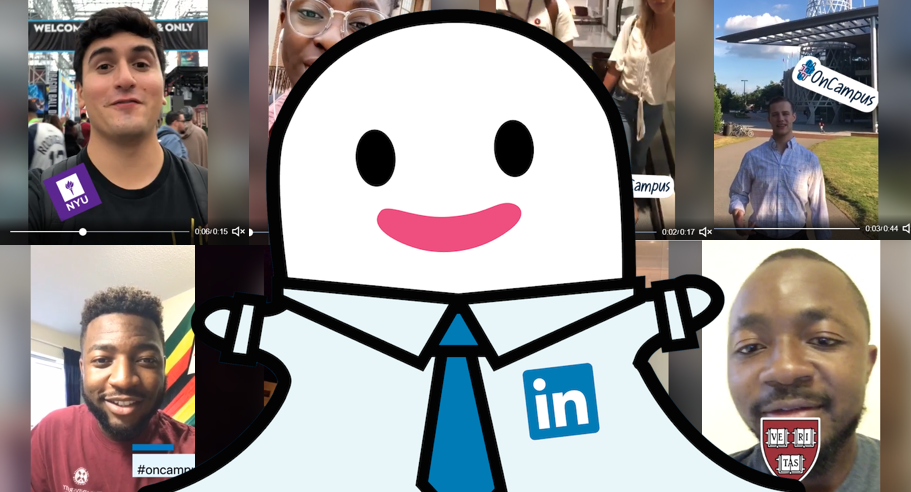



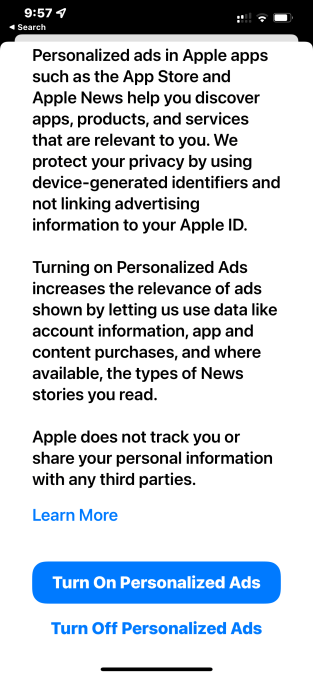

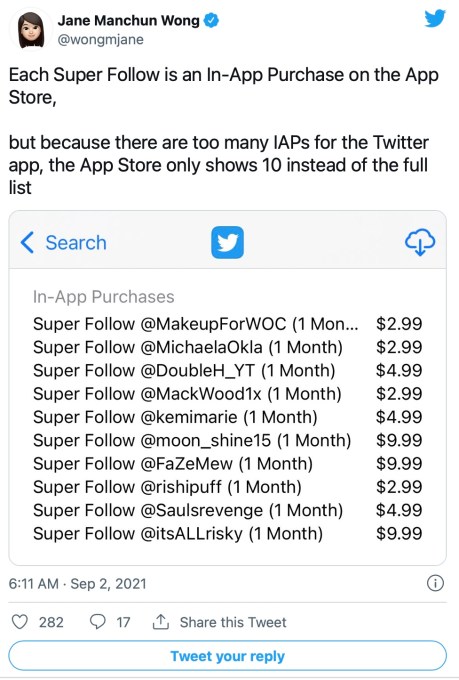

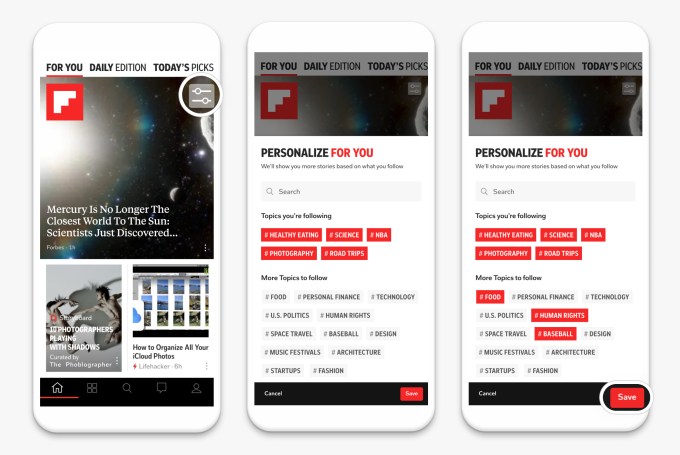
 Neobank Point
Neobank Point  Playtika Holding Corp., the maker of games like Bingo Blitz and Slotomania,
Playtika Holding Corp., the maker of games like Bingo Blitz and Slotomania, 
